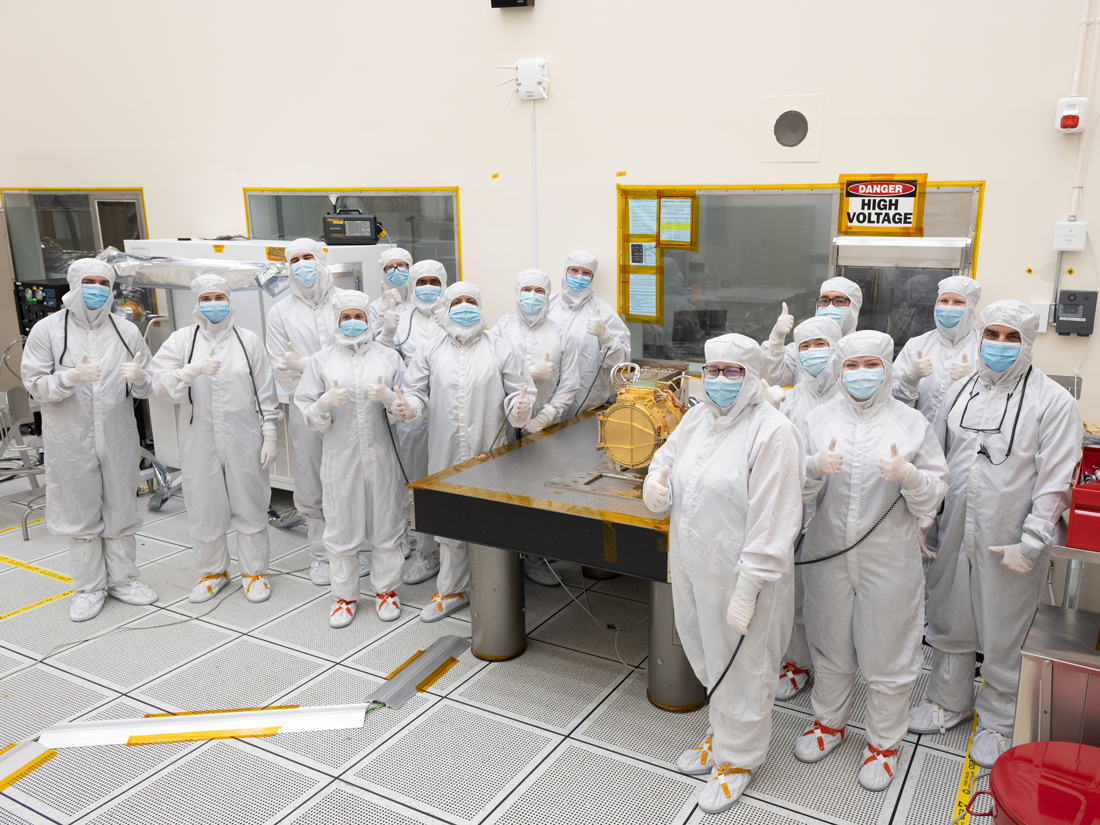All Resources
Europa Clipper's Dust Analyzer Delivered to JPL

Europa Clipper’s SUrface Dust Analyzer instrument, called SUDA, was delivered to NASA’s Jet Propulsion Laboratory (JPL) in September 2022. Seen in this image are engineers from JPL and the Laboratory for Atmospheric and Space Physics (LASP) at the University of Colorado Boulder, who built the instrument.
Tiny meteorites eject bits of Europa’s surface into space, and a subsurface ocean or in-ice water reservoirs might vent material into space as plumes. To study this, SUDA will scoop up larger particles from these plumes and identify their chemistry, revealing Europa’s surface composition - including potential organic molecules. SUDA can detect salts in the dust and ice grains, providing additional information about a subsurface ocean. If a subsurface ocean or reservoir is venting material into space as plumes, SUDA will help us to determine if Europa’s water is suitable for some form of life.
Europa Clipper will conduct nearly 50 flybys of Europa, which scientists are confident has an internal ocean containing twice as much water as Earth’s oceans combined. And the moon may currently have conditions suitable for supporting life. The spacecraft’s nine science instruments will gather data on the moon’s atmosphere, surface, and interior – information that scientists will use to gauge the depth and salinity of the ocean, the thickness of the ice crust, and potential plumes that may be venting subsurface water into space.


